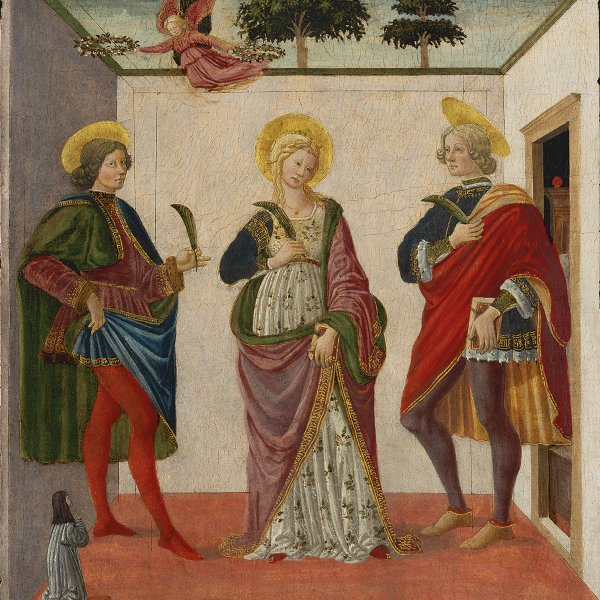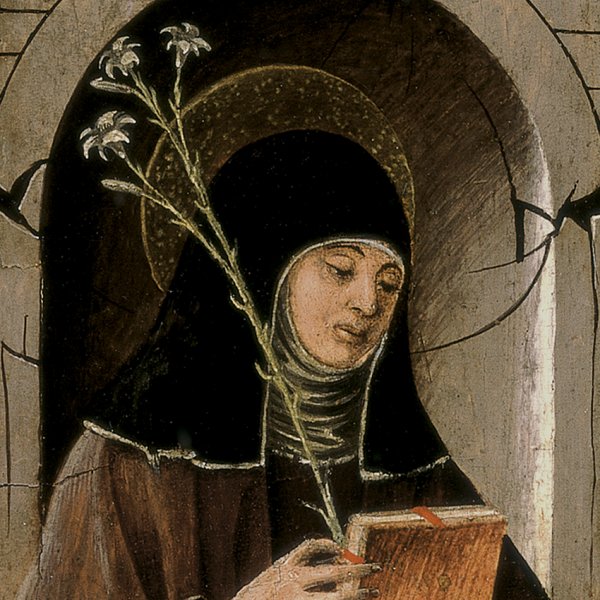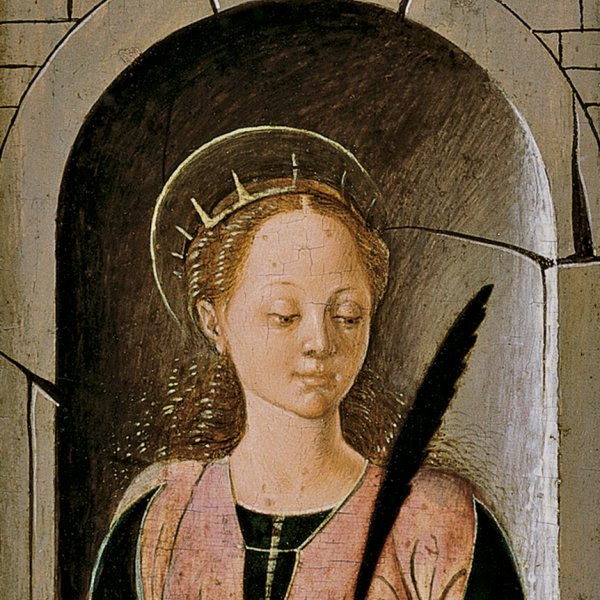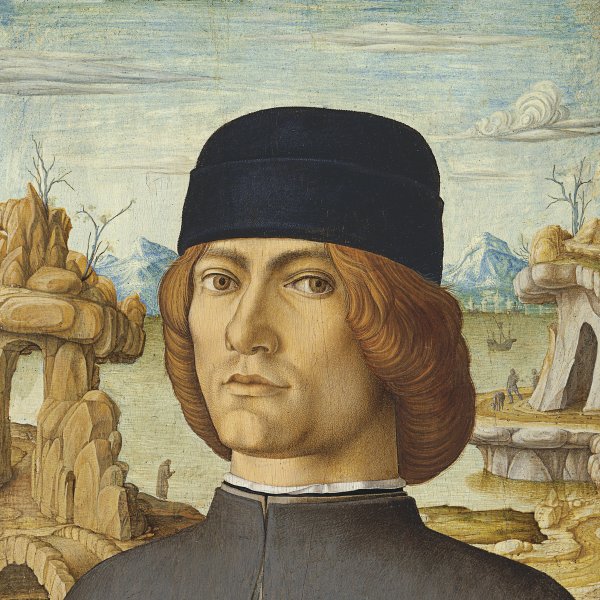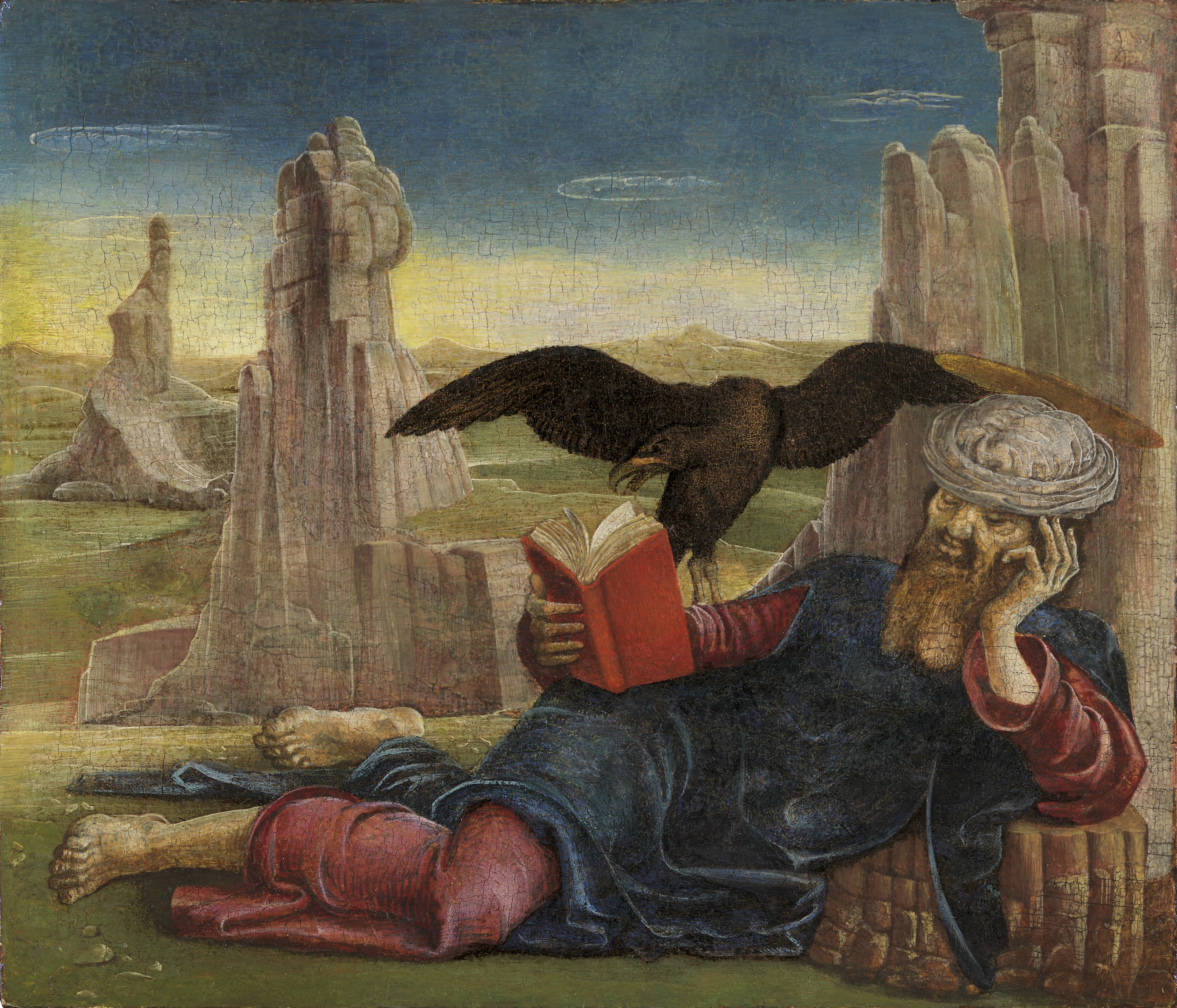Saint John the Evangelist in Patmos
ca. 1470 - 1475
Tempera on panel.
27 x 32 cm
Museo Nacional Thyssen-Bornemisza, Madrid
Inv. no.
410
(1976.15
)
Room 4
Level 2
Permanent Collection
Cosmè Tura was one of the great painters of the Quattrocento. He was the first artist of the Ferrarese School, which was associated with the d’Este family and which also involved the painters Francesco del Cossa and Ercole de’Roberti (also represented in the Collection). The first reference to Tura’s professional activities dates from 1451 in Ferrara and involves the production of various banners. Between 1453 and 1456 there is no reference to the artist in the city’s archives, suggesting that he was away, possibly in Padua or Venice. If this were the case he could have studied the work of Francesco Squarcione and Andrea Mantegna, as well as that of Andrea Castagno, including the latter’s frescoes in San Zaccaria in Venice. In 1456 Tura is again recorded in Ferrara where two years later he was appointed court painter.
Prior to its entry into the Thyssen-Bornemisza collection in 1976 Saint John the Evangelist in Patmos was in three private collections: the Castabili collection in Ferrara, the Gnecco collection in Genoa in the 1950s and the collection of the marquis Dal Pozzo in Milan. The painting came to wider attention when it was included in an exhibition in 1933 and was from then on associated with Tura but described as a work close to his style. The following year, in 1934, Roberto Longhi attributed it to Tura on the basis of its high quality and from then on it has been considered an autograph work. Due to his preaching activities Saint John the Evangelist was exiled by the Emperor Domitian and sent to the deserted island of Patmos where he lived alone and wrote The Revelation of Saint John the Divine. On Domitian’s death he left Patmos and returned to Ephesus near the east coast of Asia Minor. The Evangelist’s only company on Patmos was an eagle that, according to legend, held up his inkwell with his beak and spread out its wings to form a desk on which the saint could write. The eagle is one of John’s most characteristic attributes and is associated with his role as author of the Gospel of Saint Johnand The Revelation.
In Tura’s interpretation of this scene Saint John is lying in the foreground peacefully reading and accompanied by a tame eagle that rests on his arm. The bird spreads out its wings and brings its head close to the book to follow the saint in his reading. The hostile atmosphere of Patmos is conveyed in the landscape with its broad, arid plain broken only by a few rocky outcrops of vertical form with sharp outlines, all conveying a sense of desolation. The supernatural character of the landscape is emphasised by the colours such as the blue, green and yellow, the pale tones of which surround the brighter areas created by the saint and the eagle.
The panel has been dated to around 1470–75. Its horizontal format has led to the suggestion that it was part of a predella, while the landscape has been compared to the one in Saint Anthony of Padua, now in the Galleria Estense, Modena.
Mar Borobia
Prior to its entry into the Thyssen-Bornemisza collection in 1976 Saint John the Evangelist in Patmos was in three private collections: the Castabili collection in Ferrara, the Gnecco collection in Genoa in the 1950s and the collection of the marquis Dal Pozzo in Milan. The painting came to wider attention when it was included in an exhibition in 1933 and was from then on associated with Tura but described as a work close to his style. The following year, in 1934, Roberto Longhi attributed it to Tura on the basis of its high quality and from then on it has been considered an autograph work. Due to his preaching activities Saint John the Evangelist was exiled by the Emperor Domitian and sent to the deserted island of Patmos where he lived alone and wrote The Revelation of Saint John the Divine. On Domitian’s death he left Patmos and returned to Ephesus near the east coast of Asia Minor. The Evangelist’s only company on Patmos was an eagle that, according to legend, held up his inkwell with his beak and spread out its wings to form a desk on which the saint could write. The eagle is one of John’s most characteristic attributes and is associated with his role as author of the Gospel of Saint Johnand The Revelation.
In Tura’s interpretation of this scene Saint John is lying in the foreground peacefully reading and accompanied by a tame eagle that rests on his arm. The bird spreads out its wings and brings its head close to the book to follow the saint in his reading. The hostile atmosphere of Patmos is conveyed in the landscape with its broad, arid plain broken only by a few rocky outcrops of vertical form with sharp outlines, all conveying a sense of desolation. The supernatural character of the landscape is emphasised by the colours such as the blue, green and yellow, the pale tones of which surround the brighter areas created by the saint and the eagle.
The panel has been dated to around 1470–75. Its horizontal format has led to the suggestion that it was part of a predella, while the landscape has been compared to the one in Saint Anthony of Padua, now in the Galleria Estense, Modena.
Mar Borobia





